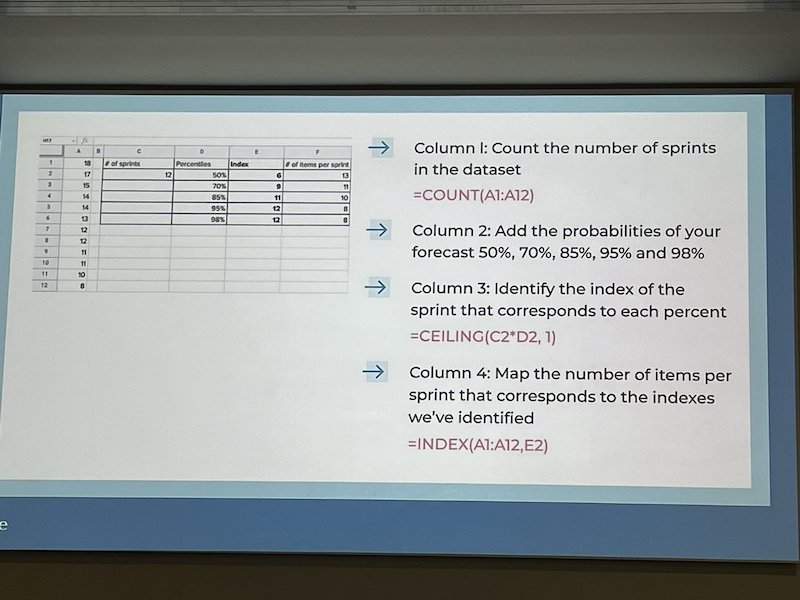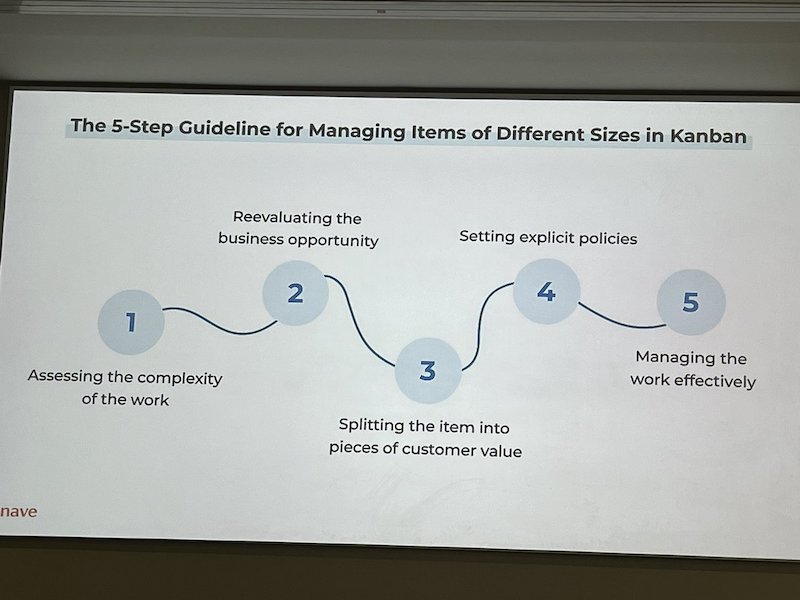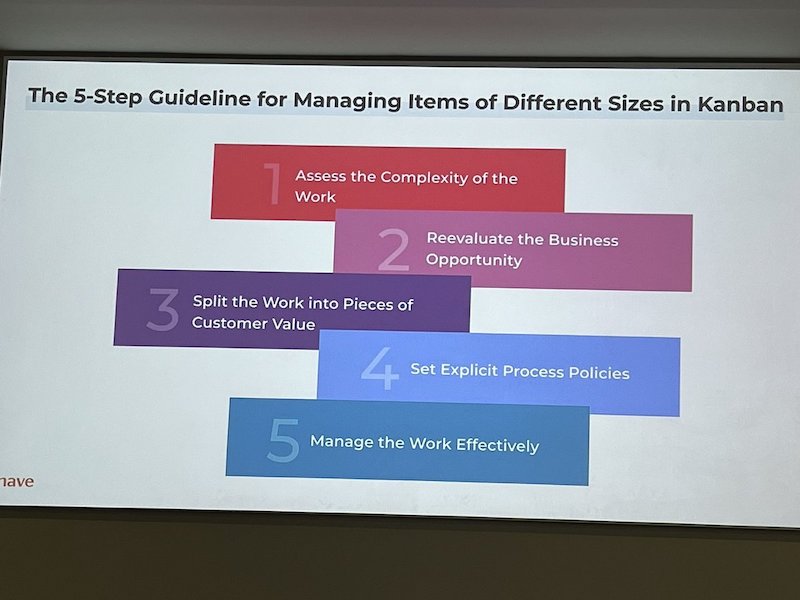Kanban doesn’t work for us because we don’t have items of the same size” - If I had a dollar for every time I heard this statement, I could afford to take my entire family on a month-long, all-inclusive, five-star tropical vacation. And I have a large family!
The concept of artificially splitting your work items into even pieces to leverage Kanban is one of the biggest misconceptions. This is the main reason why teams insert the adverse impact it causes.
“But Sonya, If we don’t slice our items into even pieces, how do we keep our commitments in Kanban?“. In this session, I’ll give you a straightforward answer to this question and we’ll explore the 5-step guideline for managing items of different sizes in Kanban. I’ll see you there!
“We will deliver these 10 items by next Thursday”
what is the problem with this statement?
two major problems:
- fixing scope and end date
- assumption there will be no additional work or priority will stay the same
there is no model that provides 100% certainty that something will happen in the future
Kanban is an approach to avoid estimating but do the actual work that is important
=> probabilistic forecasting
mitigate the risk of failure as much as possible
“We can deliver 10 items by next Thursday with an 85% probability of hitting that target”
the main goal is to mitigate risk of failure as much as possible
How to decide how much work to commit to in your next sprint? in just a couple of minutes

=> the highest the probability, the highest the chance the commitment will be achieved
“We can take any 10 items from our backog and we will finish them in less than 14 days with 85% certainty”
but this will only work for items of the same size???
the size of your work doesn’t affect the accuracy of your forecast
we said any 10 items!!!
=> The 5-step guideline for managing items of different sizes in Kanban

1. Assess the Complexity of the Work
- analysis: gain an understanding of the problem we’re trying to solve
- forecasting: evaluate whether there is a risk of breaking the commitment
the most important part: the conversation about what we need to do and for who we need to do it
Would the effort time needed to complete this work item exceed 14 days?
if no, exit and go to the next item
if yes, move on to step 2
2. Reevaluate the Business Opportunity
making sure the work is really the priority of the moment
in Kanban we do not prioritise backlogs => filter backlogs based on risk profiles
the higher the risk => the sooner we want to start work on the item
=> end with a list of options with the highest risk

3. Split the work into pieces of customer value
does this work item make sense from a customer’s point of view
what is Customer Value any way?
put yourself in the customer’s shoes, what is the pain
the main goal is to deliver results and collect customer’s feedback sooner so you can adjust your course accordingly
when splitting stories => always do it from a customer’s perspective
the process of splitting stories is continuous!
when you identify a work item is way more complex than you first thought, go again over the process of splitting the story
4. Set explicit process policies
Process Policy?
- how do we handle urgent items, what happens when items with the same priority flow through the process
- what happens when an item gets blocked
- how do we manage defects
your explicit policies dictate what should happen in different scenarios in order to ensure that the work moves smoothly through the process
=> optimise delivery speed

5. Manage the Flow of Work effectively
delivery time is way more than effort time to implement a work item!!
delivery time = effort time + WIP coordination time + new work coming in between time + bottlenecks time + blockers time + defects time
research: analysis of 10.000 workflows
=> on average 70% waiting time
Always strive to reduce the waiting time that your work spends in progress
to improve delivery speed => cut waiting time
this is the fastest and cheapest way to improve delivery time

Your Next Step
The 5-Step Checklist to Handling Complex Work Items
<www.getnave.com/flowcon>